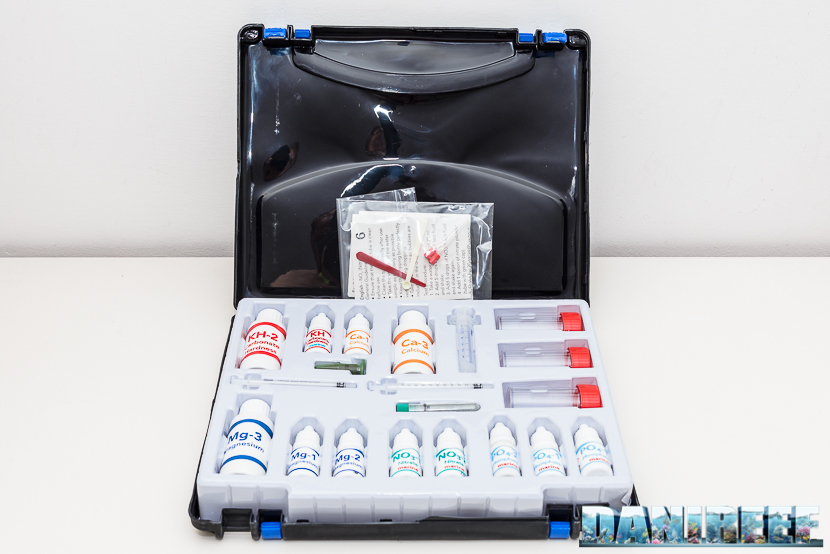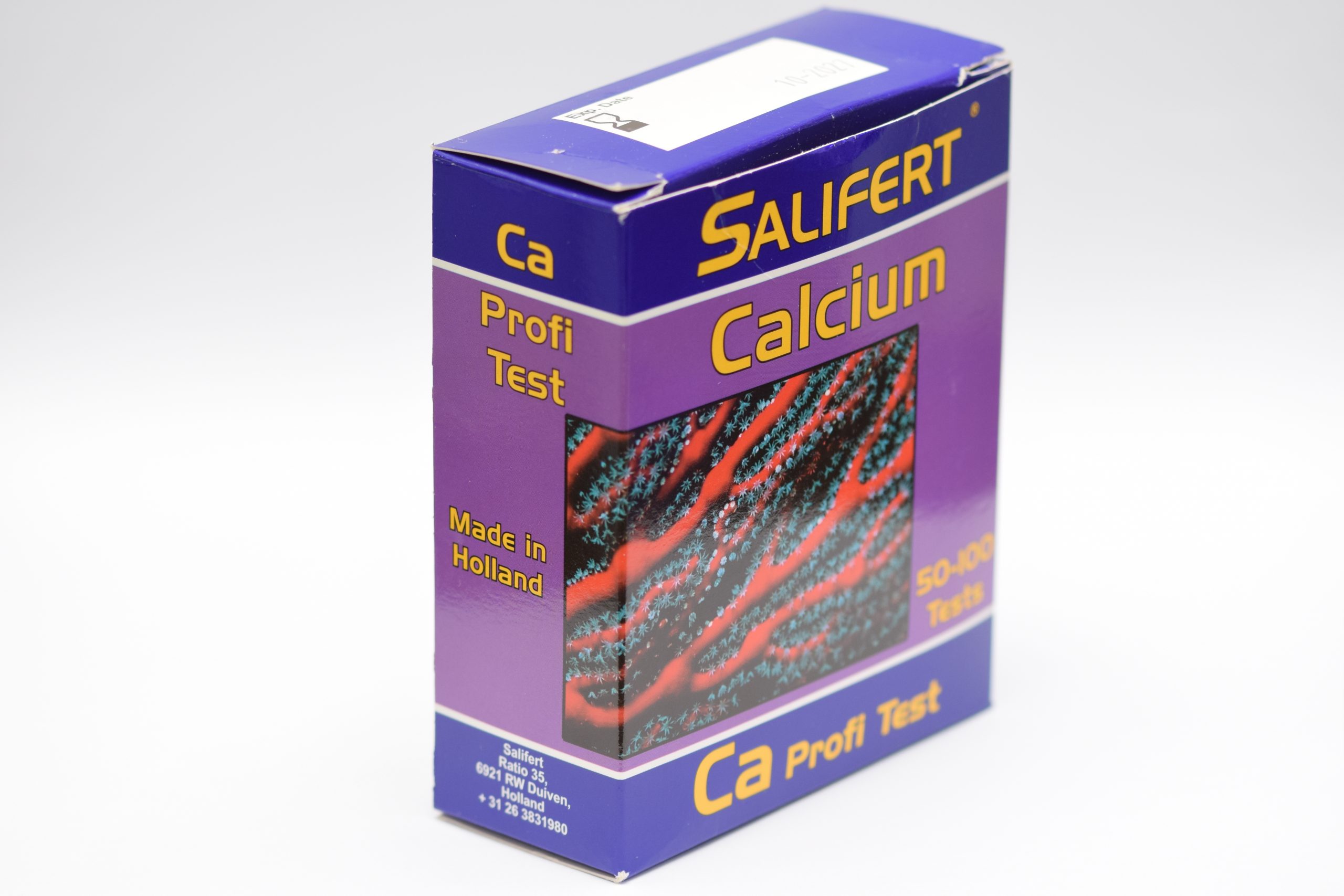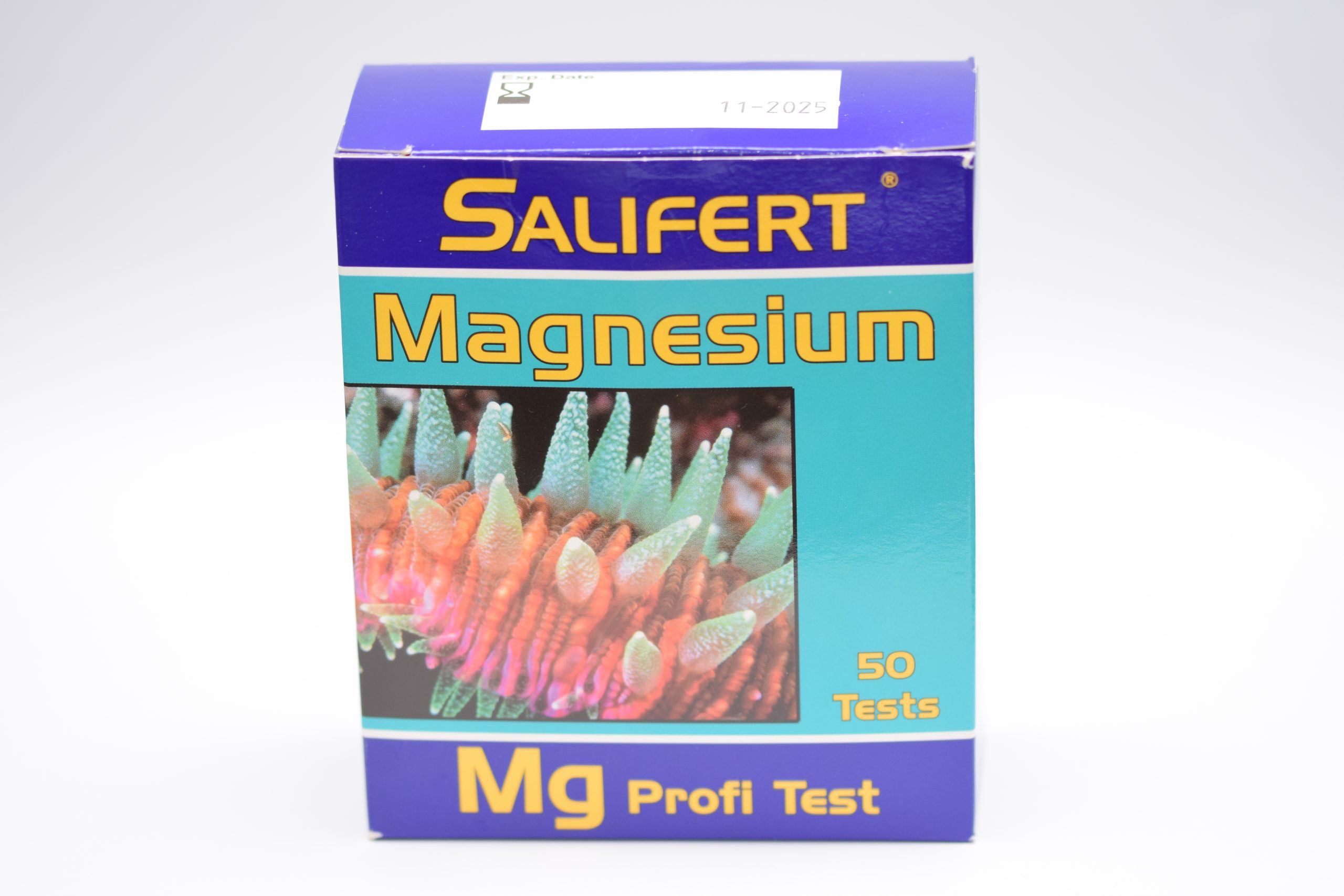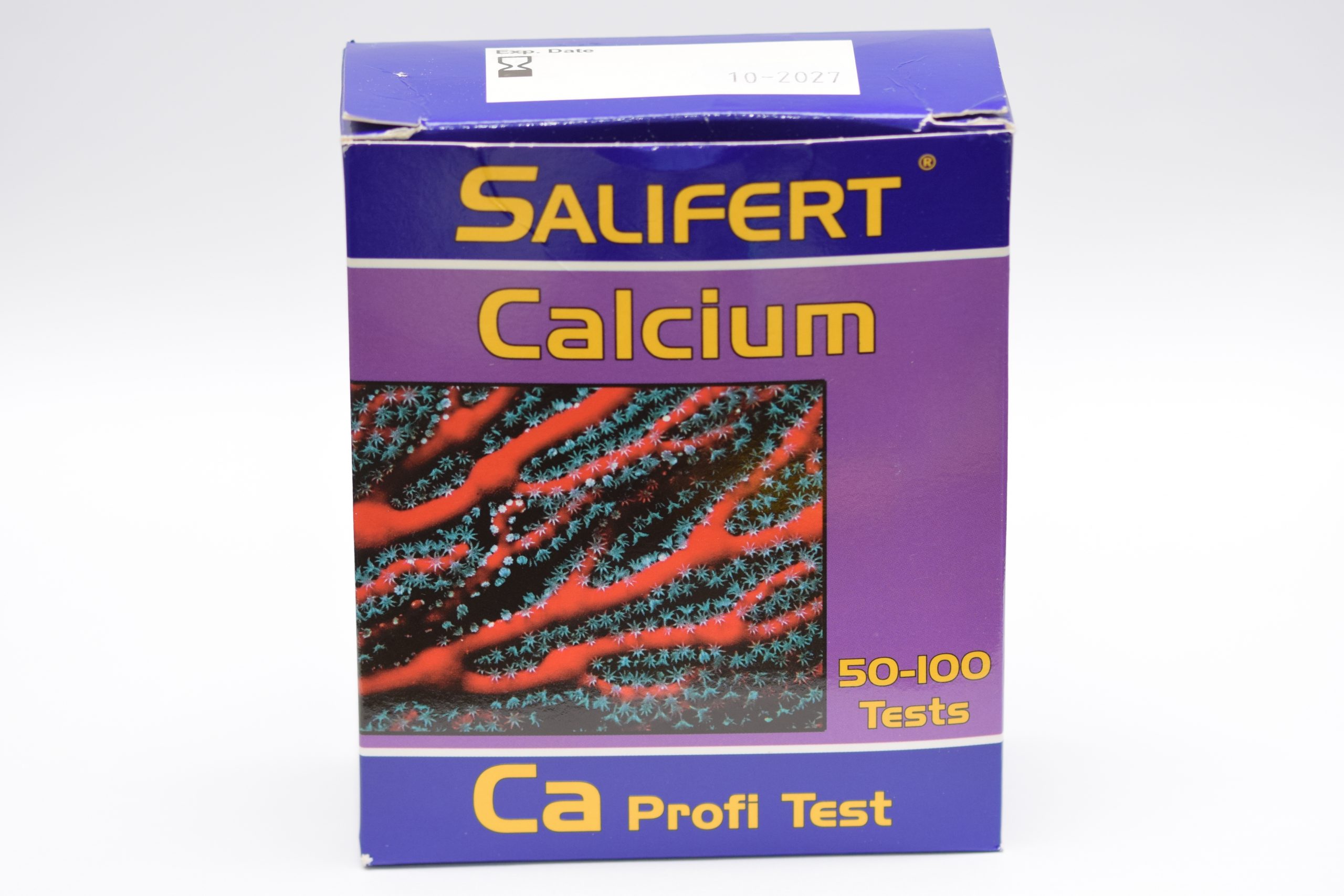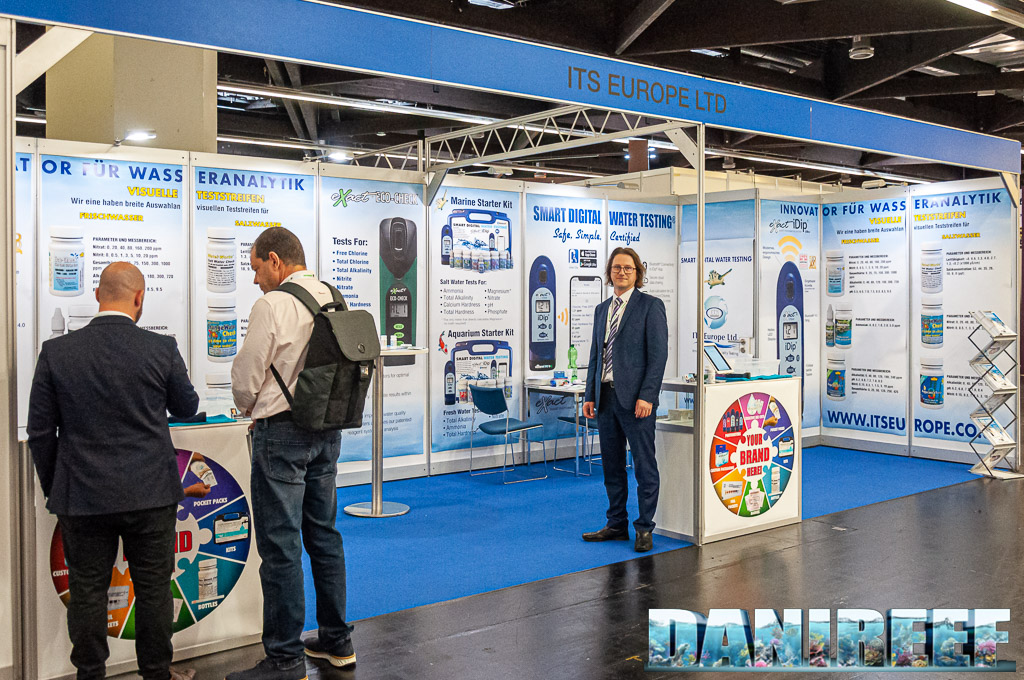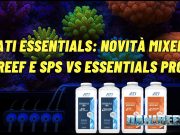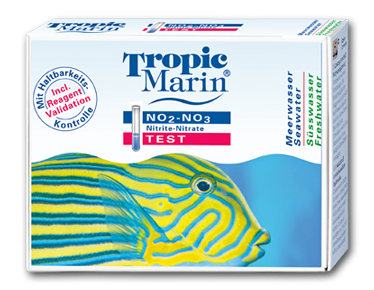
We tried the Tropic Marin test Nitrite/Nitrate and we really liked it also because of its price. Let’s start! ![]() Per leggere l’articolo in italiano cliccate qui.
Per leggere l’articolo in italiano cliccate qui.
This test can be used for both freshwater and marine water, its scale allows us to measure nitrite values ranging from 0 to a maximum of 2 mg/l and nitrates up to 100 mg/l. The test costs around 16€, very cheap if we consider that we can use it for about 40 measurements. Anyway, it seemed reliable to us. The same test can be found in the “Tropic Marin Expert Testset“, review here.
The concept of using the same reagents for measuring both nitrites and nitrates is excellent, as in a new marine tank we need to measure nitrite quite often to have an idea of its maturation. Once mature, the nitrite test usually becomes redundant and we end up using it just to read the value 0, or throwing it away half full. Tropic Marin offers us a double test where each reagent used for nitrites is also used for nitrates. A very good idea for those of us who just started and those who have a mature tank.
It takes only a few minutes to carry out this test. After shaking each reagent bottle and rinsing the cuvettes with tank water, we fill them with 5 ml tank water (one for nitrites and one for nitrates).
Nitrite test
Tropic Marin recommends a value between 0.02 and 0.1 mg/l of nitrites for freshwater tanks and sets a limit of 0.5 mg/l for animals health. For marine tanks on the other hand, the nitrite should never be above 0.05 mg/l.
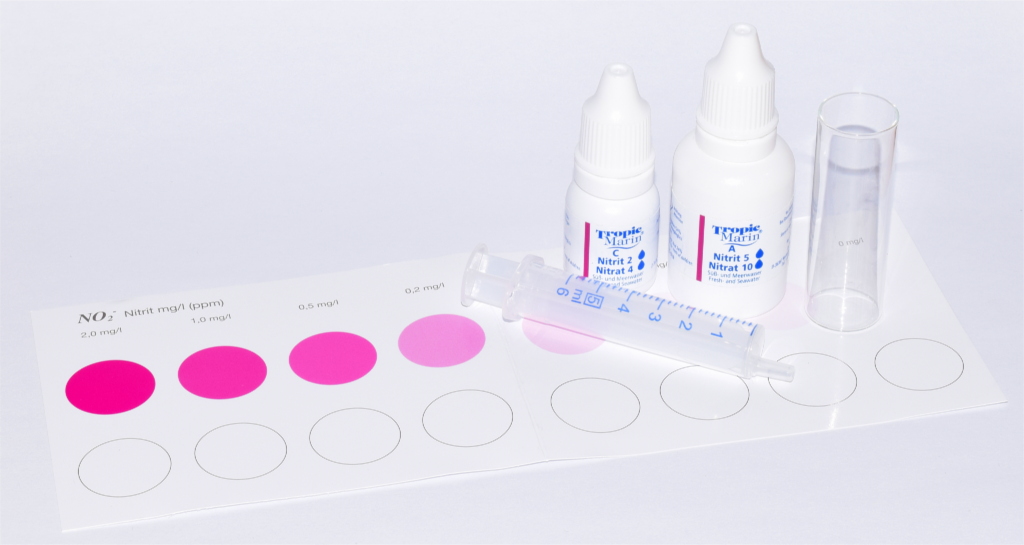
At this point we add 5 drops of the reagent A in the first cuvette, which we will close and gently stir. After waiting for 3 minutes we can open it again, add 2 drops of reagent C and gently shake again. Now we can proceed with the reading by comparing the water colour with the colours printed, choosing between 0 / 0,02 / 0,05 / 0,1/ 0,2 / 0,5 / 1,0 / 2,0 mg/l. We carried out the test for several times and the water colours resulting were very similar, so the test has a good constancy.
It is less easy to understand which shade of pink we should refer to. To make sure that each test result isn’t biased by different individuals, two of us separately compared the coloured cuvette with the scale, under natural light and artificial light.
By reading the results four-eyed, the first time we read similar but different values: 0.02 mg/l and 0.05 mg/l (we decided not to allow intermediate results). The second time we read 0.02 mg/l and “between 0 and 0.02 mg/l” (this time we allowed an intermediate result).
When later we compared the two cuvettes none of us has been able to find a difference between the two colours. This tells us that the differences in results were not due to an actual different result but rather to a different individual interpretation.

We decided to trust the second result, as by looking at them closely (and under good light) you can actually learn to interpret them. We also suggest that you don’t compare the colours from the designated circled area, but by placing the cuvette as near as possible to the printed colours.
At last, we carried out a JBL test to compare results. We are sorry we couldn’t use a more reliable test, Triton does not offer the opportunity to test these values in the laboratory as they would change over the time water gets to their lab. The JBL test has shown a value around 0.025 mg/l and definitely lower than 0.05 mg/l, so our test is in line with this result. The JBL test does not allow for interpretation errors, which we think is the only issue of this Tropic Marin test.
The nitrates test (NO3) and our conclusions on page two








